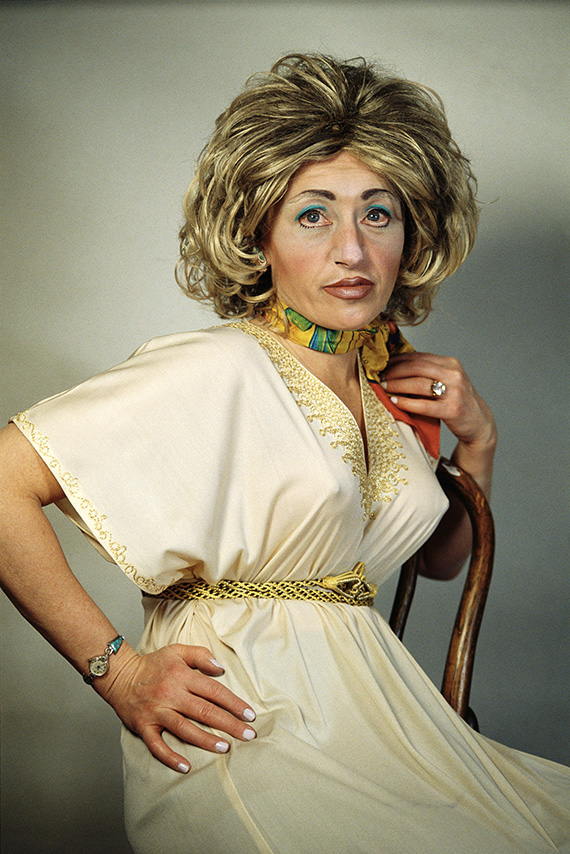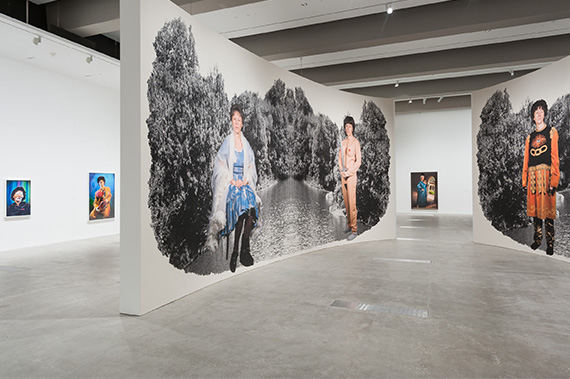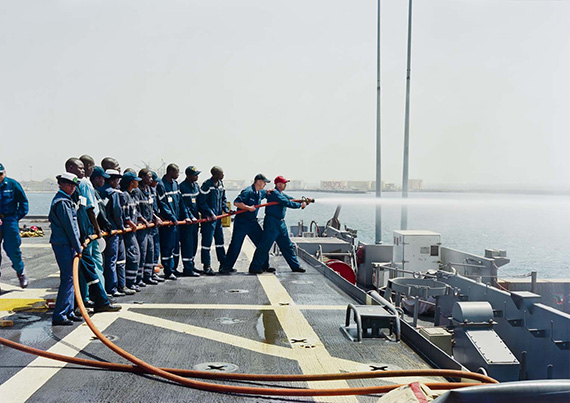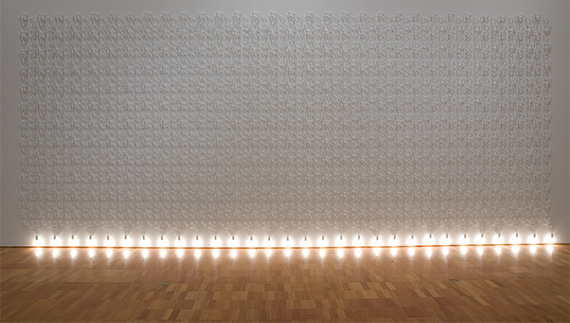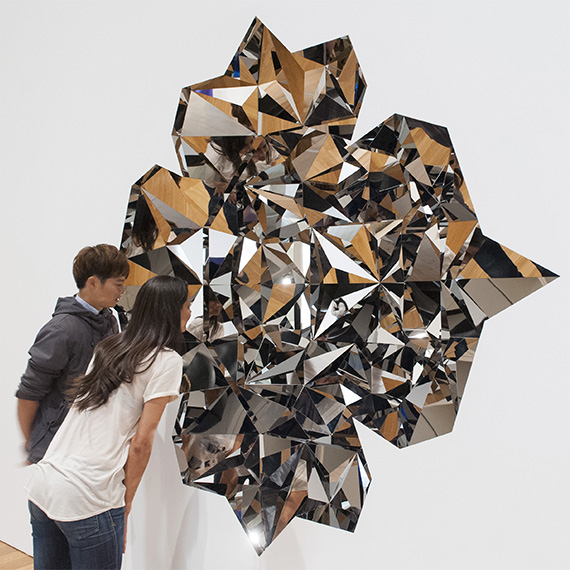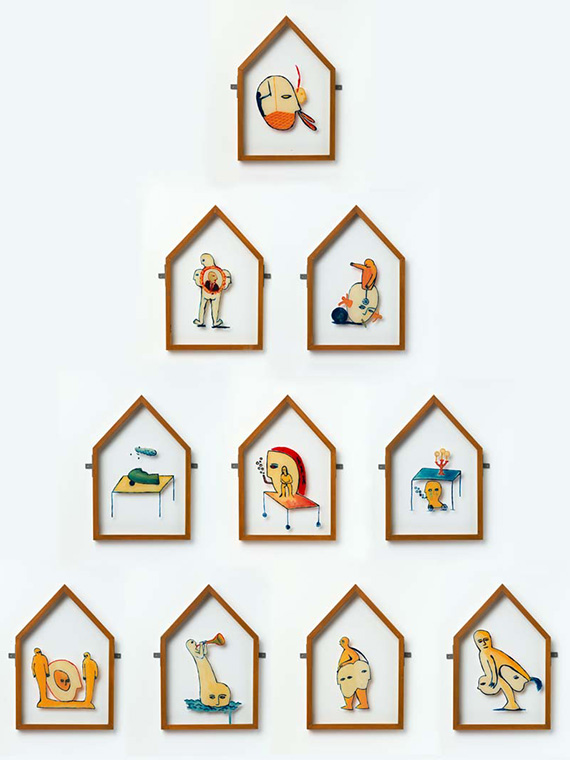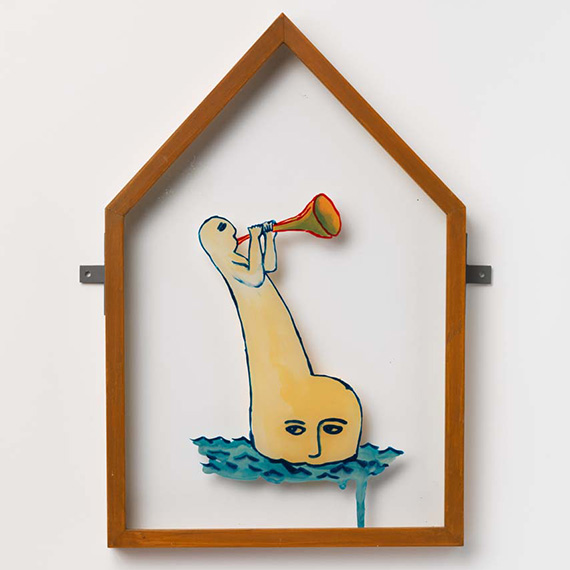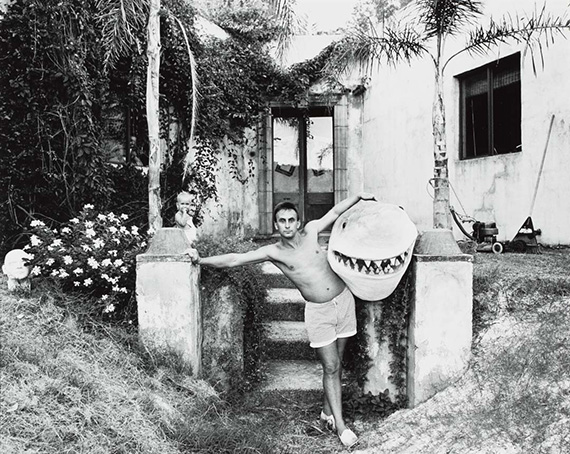
My life in Queensland — dream of a reality — that dream becomes reality — reality is but a dream. Bobby Lees, Sculptor/performer/builder, Sunshine Beach
Lin Martin produced a series of portraits which captured a number of unique characters within their own environments. Curator Claire Williamson noted in the 1988 catalogue essay, ‘Photographic practice in Queensland in the 1980s:
While in many ways her subjects appear as ‘typical’ Queenslanders, each has a unique personality which emerges from the rapport developed between photographer and sitter.

Well, I have never been any place else. I was born here, grew up here. But its alright. To tell you the truth, it’s the best place I’ve ever seen. Bob Mitchell, Mechanic, Eumundi
In the artist statement from the original Journeys North Exhibition, Martin stated:
I have always been fascinated by the way people perceive themselves to be and by the details and trappings with which they define their existence. Their physical environments, at home or at work, often appears to be reflections of, or accessories to, their inner selves.
Portraiture is an exacting form of expression. The artist must not only produce a likeness of the individual but also provide a graphic description of the subject that involves the viewer in an act of knowing.
My portraits of people living in Queensland have been composed to be read. The subjects are posed before a carefully chosen backdrop of clues to evoke in the viewer a sensation of acceptance and understanding of the unique individuals standing before them.
I do not choose my subjects at random. My working methods demand a degree of intimacy and co-operation with the subject. The body of work evolves as a kind of visual chain letter. Each person was known to me or known by persons known to me. It is only through such a personalized approach that I can be assured of the depth of involvement required as to produce a successful portrait. Once reassured as to my intent, the subjects are fascinated that I find them so fascinating. I treat each opportunity to photograph as a great privilege and in return I am treated with an astonishing candour. Thus, each portrait is the end result of an exhilarating and intense communication.
As the work proceeded, I found my original rationale took on a new slant. My involvement with the subjects, with the ‘ordinary’ Queenslanders, became not only an opportunity to make a visual statement, but also an act of personal reconciliation. I found myself rediscovering and delighting in values and influences that had shaped me and that that I had for so long rejected and denied. The small town girl from the far north sugar town took a long hard look at from whence she came and decided that it had always been okay after all.

This was a new beginning for me. My whole life was in the two suitcases in my hands. I got off the plane and I felt like I had come home. I can’t tell you why, but this is home. I remember a jacaranda was blooming, and I walked across the tarmac and I felt at peace. I find here that I am doing my thing, in my own way and thoroughly enjoying myself. Sheila Giles, ‘Given the gift of healing’, Brisbane
In the years leading up to 1988, the Galley commissioned six photographers to produce a portfolio on the theme of community life in Queensland entitled ‘Journeys North’. Their images looked at attitudes to Australian community life, and the unique qualities of the Queensland lifestyle, land and environment. Last exhibited January 1988 it is an ideal time to re-examine this portfolio which highlights how Queensland has changed in the intervening 28 years since the commission.

This is the ultimate, I call it God’s country. The winter sunshine, fantastic beaches and the people. They’re that friendly, they’ll never set their dogs onto you. Look out there, sky, forest and the river. I’m just happy looking out the window. Gordon Inglis, Station master, Kuranda
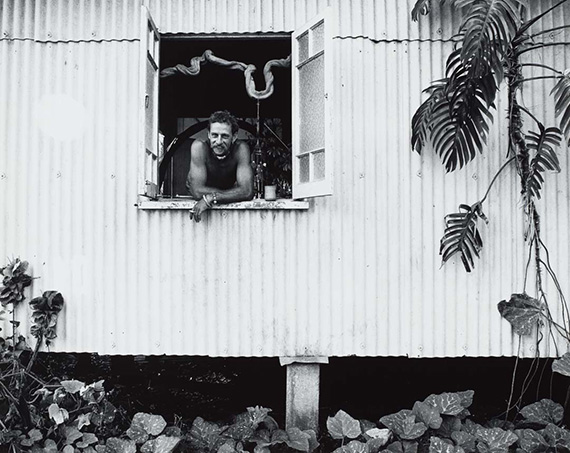
This is the most beautiful spot in the world and here we sit, looking out to the reef and the islands. It belongs to all of us. Then one comes from the south, with his stolen millions and calls it his. Progress may seem inevitable, but we have a choice. We must decide which way to go, or we will lose it all. There’s always a snag to living in paradise. Lie long enough on the beach under a coconut tree and you’ll get hit on the head by a coconut. Yes, nutted in paradise. Deiter, Cane weaver, Bingil Bay
With the financial assistance of the Australian Bicentennial Authority, the Gallery commissioned photographers who were long term residents of Queensland or had strong associations with the state. Over an eighteen month period Graham Burstow, Lin Martin, Robert Mercer, Glen O’Malley, Charles Page and Max Pam travelled to different regions of the state, documenting social, cultural and environmental diversity.
Revisit our selection of this portfolio until 3 July at the Queensland Art Gallery and re-examine the subjects each photographer examined and reflect on their relevance today. Queensland has, of course, changed in myriad ways in the intervening years, however ‘Journeys North’ provides an intriguing and enduring visual record of some of the people and places that have helped define this State.
